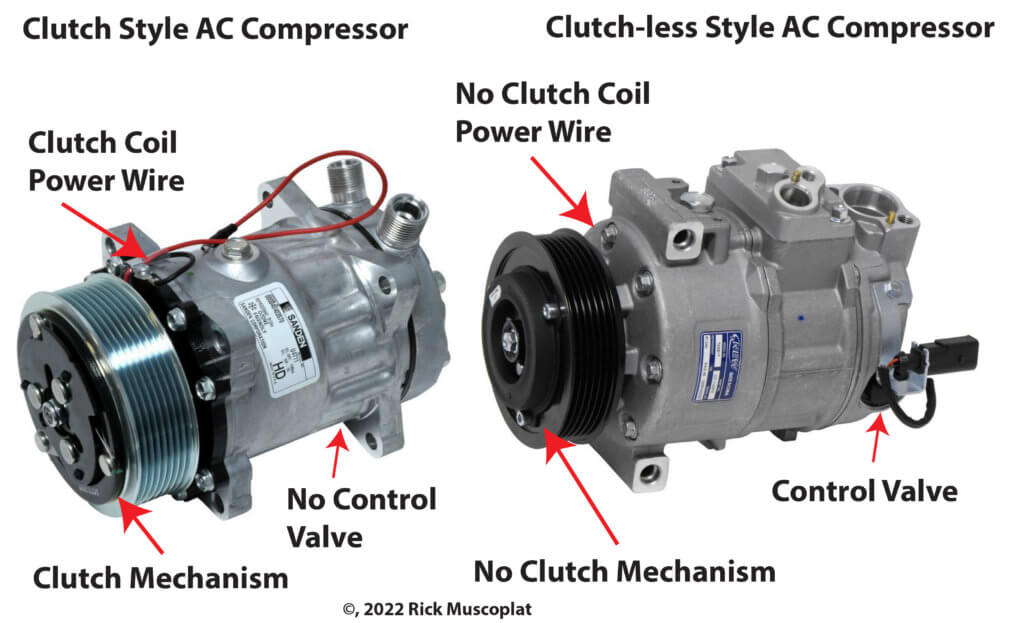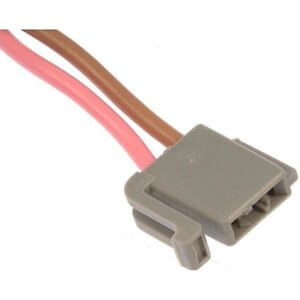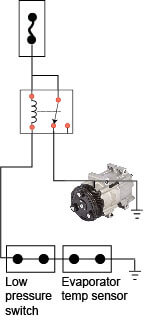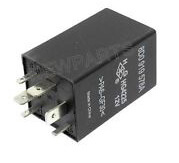AC compressor clutch not engaging: How to troubleshoot
The Ultimate Guide to a Compressor Clutch Not Engaging—and How to Fix It
When your vehicle’s air conditioning refuses to blow cold air, the culprit often lies in the compressor clutch not engaging. An AC compressor clutch not engaging means the pulley is spinning, but the compressor clutch isn’t engaging, so you don’t get compression or cold air. In this expert guide, I’ll explain the common reasons why a compressor clutch is not engaging and walk you through proven fixes that restore peak AC performance.
When your car’s air conditioning isn’t blowing cold air, the first step is to see if the compressor clutch is engaging (on AC systems equipped with a clutch-style compressor). The clutch is what connects the drive belt to the compressor’s main shaft, and that’s what moves the pistons. There can be several reasons why the AC compressor clutch is not engaging in your vehicle.
3 Common Causes of Compressor Clutch Not Engaging
Low Refrigerant Pressure— If the system is severely undercharged, the low-pressure cutoff switch won’t energize the AC clutch relay. Without that relay signal, your compressor clutch not engaging is simply the system protecting itself from damage.
Blown Fuse or Faulty Wiring— A short in the clutch coil windings or harness can blow the fuse protecting the clutch circuit. Inspect the fuse box for a blown fuse labeled “AC CLUTCH”—a clear sign your compressor clutch not engaging.
Defective Switch or Coil— A bad low-pressure switch or a burned-out clutch coil will fail to complete the circuit. Even with proper voltage, a worn coil can’t generate the magnetic field needed to pull in the clutch, leaving your compressor clutch not engaging despite all other systems working.
Here are the 3 most common causes:
1) The system is so low on refrigerant that the low-pressure cutoff switch is not energizing the AC clutch relay
2) The fuse to the clutch coil is blown due to a short in the coil windings are the wiring harness
3) You have a bad low-pressure switch or a bad clutch coil.
Step 1: Know What Type of Compressor You Have
Late-model vehicles often use a clutchless variable displacement AC compressor. Instead of using a clutch, the belt-driven pulley on these compressors continuously spins the compressor shaft as long as the engine is running, even when the AC is turned off. When the AC isn’t on, or the HVAC head isn’t calling for AC, the wobble plate inside the compressor is in the 0° position, so the compressor isn’t compressing any refrigerant. In other words, the compressor is free-wheeling.
To learn more about clutchless AC compressors, see this post
How to tell if you have a clutch or clutch-less style AC compressor
Here are the key visual differences between a conventional clutch-style AC compressor and a clutch-less AC compress .
.
• The clutch mechanism is visible on the front of the compressor pulley.
•The clutch coil wire/connector is present.
•No control valve is present.
Clutch-less style AC compressor visual differences
There is no clutch mechanism on the front of the pulley
No clutch coil wire is present.
You see a control valve and a connector on the body of the compressor
Test to determine whether you have a clutch or clutch-less style compressor
1) Turn off the defrost setting.
2) Turn off the AC.
3) Start the engine.
4) If the center portion of the AC compressor clutch pulley is spinning, you probably have a clutchless AC compressor
2) Next, check the clutch for power and ground
Some AC compressor connectors have a single terminal that provides power, and the compressor body provides the ground. Two-wire clutch connectors have a power and ground wire. To test:
• Disconnect the connector from the compressor.
• Using a multimeter set to DC volts, check for power and ground at the connector terminals.

Compressor clutch connector
If you see power but the clutch isn’t engaging, then the problem is either a bad AC clutch coil or an air gap issue. Skip to Step 7.
If you don’t see power, check a wiring diagram and test the AC clutch fuse and relay (Step 3). If both tests are good, check for the AC relay control coil ground. If the control coil isn’t getting grounded, it won’t move the contacts and power up the AC clutch.
If you don’t have power, move on to Step 3.
Step 3: There is no power at the AC compressor clutch connector. Is the static pressure high enough to activate the low-pressure switch?
The low-pressure switch prevents compressor operation when the refrigerant pressure falls below the specified psi for your AC system. Low refrigerant pressure indicates that the system has a significant leak and has most likely lost refrigerant oil. If you bypass the low-pressure switch and force the compressor to run, you can destroy the compressor due to a lack of oil.
The minimum low-pressure cut-off pressure varies among car manufacturers and depends on the type of refrigerant used and the system’s design. You can check the cutoff pressure for your vehicle by using a shop manual.
Start your diagnostic with a cold engine. Measure the air temperature in the engine compartment and then refer to the static pressure chart in this post to determine the pressure at that temperature.
Here are some typical AC low-pressure switch values
WARNING: The Low-Pressure Cutout Switch prevents compressor operation at low refrigerant pressures. This is a critical safety device to prevent compressor damage due to inadequate oil flow to the compressor.
Usual AC low-pressure switch values for R-134a systems
Operates compressor clutch at 34-psi, prevents compressor clutch operation at less than 10–psi
Operates compressor clutch at 47-psi, prevents compressor clutch operation at less than 25–psi
Operates compressor clutch at 40-psi, prevents compressor clutch operation at less than 32–psi
Operates compressor clutch at 34-psi, prevents compressor clutch operation at less than 8–psi
Operates compressor clutch at 47-psi, prevents compressor clutch operation at less than 25–psi
Step 4: No power at the AC compressor clutch connector. Is the system pressure too high?
The High-Pressure Cutout Switch prevents system damage due to excessive pressure. It disables the compressor clutch when pressure exceeds the set point and allows the compressor clutch to re-engage when the pressure drops below the reset point. The high-pressure cutoff switch is mounted on or near the receiver dryer.
• Connect a manifold gauge to the high and low-pressure ports. AC is not run for at least one hour and the engine and AC turned off.
• Record the high and low side pressure.
• Consult the R-134a temperature chart below to determine the STATIC pressure.
• If the STATIC pressure is above the high-pressure cutoff switch limits for your vehicle, the switch will not allow compressor clutch engagement.
R-134a high-pressure switch operating pressures
Prevents compressor clutch operation at pressures at or above 300–psi. Operates compressor clutch at pressures 260-psi and below.
Prevents compressor clutch operation at pressures at or above 275–psi. Operates compressor clutch at pressures 260-psi and below.
Prevents compressor clutch operation at pressures at or above 275–psi. Operates compressor clutch at pressures 235-psi and below.
Step 5: Is the evaporator temp sensor reading too cold?
The evaporator temperature sensor reports to the PCM, which shuts down the compressor if the evaporator temperatures drop too low to prevent evaporator freeze-up. Not all vehicles have an evaporator temperature sensor, so check the shop manual to see if you have one, where it’s located, and what the readings should be.
Here are the most common causes of an AC compressor clutch not engaging:
The AC system is so low on refrigerant that the pressure is lower than the minimum required to operate the low-pressure switch, allowing power to flow to the compressor clutch coil.
• The AC system pressure is too high and above the high-pressure switch’s maximum allowable pressure.
• The AC compressor clutch fuse is blown
• The AC clutch relay isn’t working. The contacts are pitted/stuck, or the relay control coil isn’t getting power or ground
• The evaporator sensor is bad, disconnected, or giving faulty readings, which is causing the HVAC controller to stop compressor operation.• Engine temp is too high. If the coolant temp is too high, the HVAC controller or ECM will shut down the AC compressor
• Other engine-related trouble codes are stored. This varies by make and model, but some engine conditions will inhibit AC operation
• Bad ground or power to the AC clutch
• Bad AC clutch coil (short or open)
• Excessive AC clutch air gap
Step 6: There is no power at the compressor connector. Check the AC compressor clutch fuse, clutch relay, and ground.
In most vehicles, the low- and high-pressure switches control the engagement of the compressor clutch. In later model vehicles, the high- and low-pressure switches are inputs to the ECM, which controls the compressor clutch relay. In addition to pressure, the ECM takes other factors into account, such as engine temperature, stored trouble codes, and data from the evaporator temperature sensor. Consult a shop manual to determine which system your vehicle uses.

In a computer-controlled system, the compressor clutch relay is grounded by the computer.

In some vehicles, the compressor clutch relay is turned on and off by the low-pressure switch and the evaporator temperature sensor.
How to test the compressor clutch relay
Remove the relay from the socket. Refer to this relay diagram to determine which  pins in the socket should have battery voltage when the key is in the RUN position and which should have ground when the high and low pressures are within limits.
pins in the socket should have battery voltage when the key is in the RUN position and which should have ground when the high and low pressures are within limits.
If the power and ground check out in the relay socket, test the relay by swapping in a similarly sized relay. If you hear the relay click when activating the AC, move on to the next step to check the integrity of the wiring harness and ground.
Step 7: You have power at the AC clutch, but it won’t engage. Check the compressor clutch coil
If you have power and ground at the compressor clutch, check the compressor clutch coil for an open, resistance, short to ground, and short to power.
Set your meter to the ohms scale to check for coil resistance and connect both leads to the clutch coil terminals. If you don’t see a resistance value, there’s an open in the clutch coil, and it must be replaced.
To check for short to ground, connect one terminal lead to one clutch coil terminal and the other lead to a metal contact point on the compressor. Switch the lead to the other terminal and repeat. You should NOT see continuity during this test. If you do, the clutch coil has shorted to ground. If you find a short, replace the clutch coil.
Step 8: The AC clutch coil checks out, but it won’t engage. Check the AC compressor clutch air gap
The gap between the clutch disc and the AC pulley must be a set distance. If the gap is too large, the clutch coil can’t pull in the clutch disc. If the gap is too small, the clutch disc may make noise when the AC is off. See this post for typical clutch air gap specifications.
Most common reasons why car AC won’t cool
©, 2018 Rick Muscoplat
Posted on by Rick Muscoplat